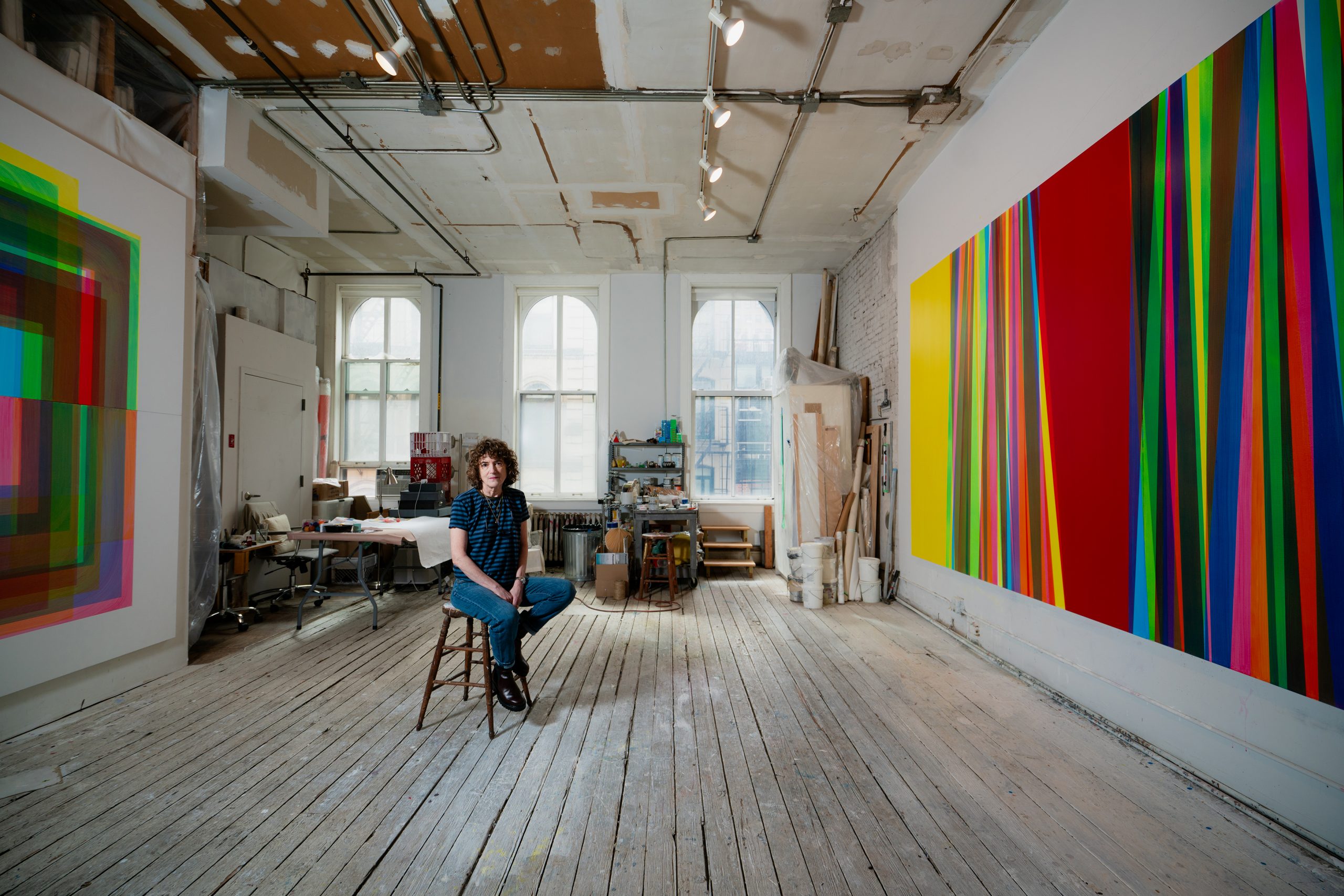
It wasn’t uncommon for artists to afford rent without wealthy patrons before developers and high-rises took a chokehold of Manhattan. They gleefully lived and worked where they slept, mostly in lofts, even if it was technically illegal. A new book is opening the curtains to the last creative residential sanctuaries left in the city.
Photographer Joshua Charow’s Loft Law: The Last of New York City’s Original Artist Lofts, newly released on Damiani Books, captures a fading way of life. Since the 20th century, as manufacturers departed neighborhoods such as Soho and the Bowery, artists moved into these industrial spaces. They set up homes and studios in these spaces illegally, while building vibrant communities. In 1982, loft-living was widespread enough that city enacted the Loft Law, recognizing their occupants as legal tenants, with the bonus of regulated rent.
A spread from Loft Law by Joshua Charow. Photo courtesy of Damiani Books.
Around 2021, Charow located the last few buildings protected by the law, and set out to document these spaces and interview their residents. His resulting book encompasses more than 100 photographs and interviews with 30 artists.
Among his images, you’ll find painter Steve Silver standing in his home in Williamsburg, which looks like an art installation with wooden coiled tubes spiking up from the ground. The concrete floor is a blocked rainbow, and a bench table is scattered with paint containers and supplies.
Meanwhile, musician and composer JG Thirwell sits on a leather swivel chair in Dumbo, dressed in plaid amid impeccably chic surroundings. On Bowery, artist Carmen Cicero poses in front of stacks of large finished canvases filed away in a wooden makeshift shelving unit. Other artists within the book are dancing, pondering, or creating in what Charow termed “this hidden piece of New York City.”
See more of Charow’s images below.
Joshua Charow, Steve Silver, Williamsburg. Photo: © Joshua Charow, courtesy of Damiani Books.
Joshua Charow, Marsha Pels, Greenpoint. Photo: © Joshua Charow, courtesy of Damiani Books.
Joshua Charow, Kimiko Fujimura, Chinatown. Photo: © Joshua Charow, courtesy of Damiani Books.
Joshua Charow, JG Thirlwell, Dumbo. Photo: © Joshua Charow, courtesy of Damiani Books.
Joshua Charow, Carmen Cicero, Bowery. Photo: © Joshua Charow, courtesy of Damiani Books.